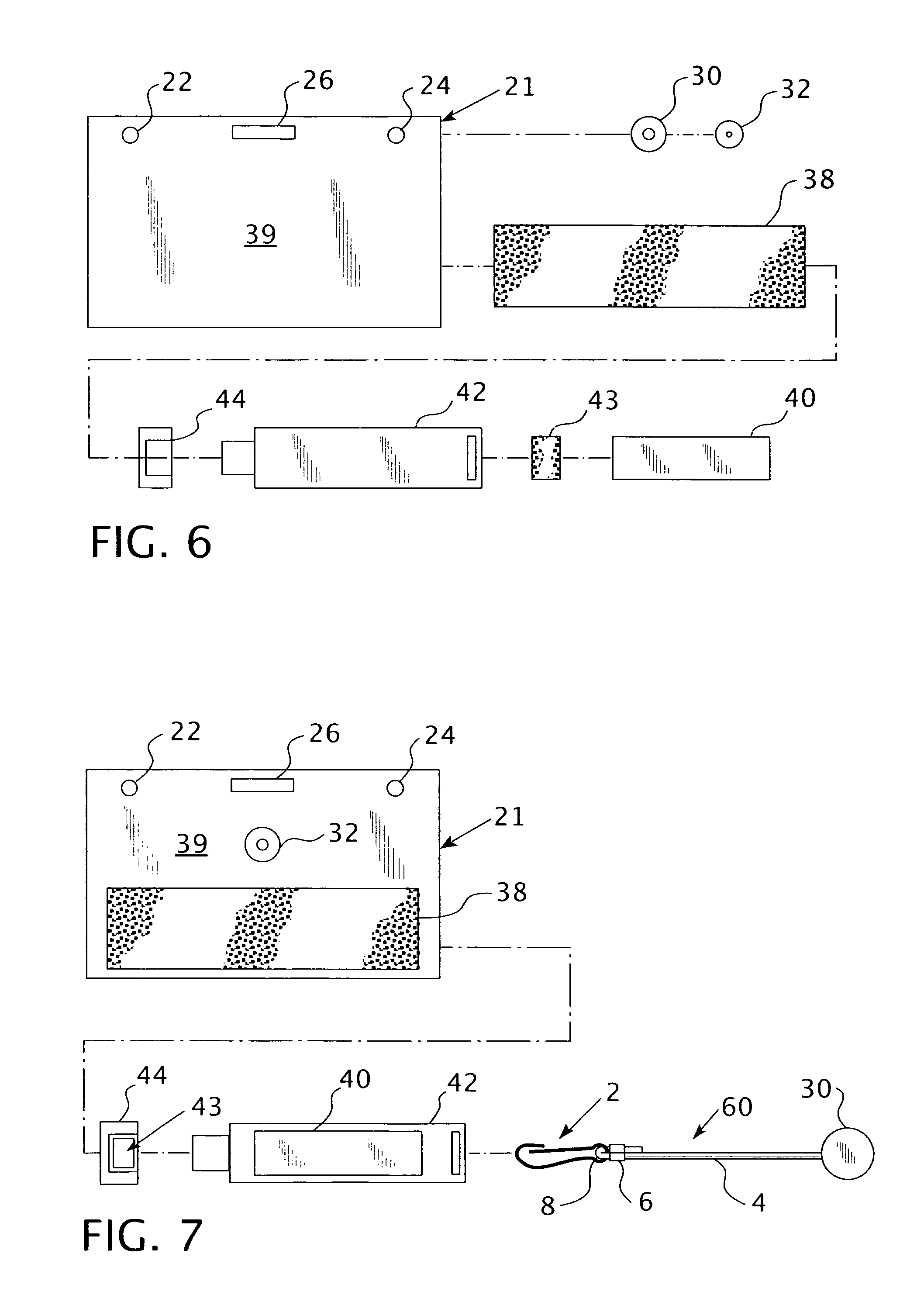This potentially consumed significant amounts of space and would require carrying these items in hand, in pockets or in some sort of briefcase, container or bag.
While these methods offer some level of security to the device and a way to locate the device with minimal searching, they are somewhat impractical in many situations:
This can prove to be less than desirable as it can put
undo stress on the device itself and the electronic port-surrounding circuitry of the
information system due to the potential
excess weight of the other items on the keychain and a downward pulling motion caused by them.
This weight may exceed the manufacturer's designed tolerance limits and cause failure to the device or the
information system.
Should someone need a key from the same keychain and the device is on to quickly
gain access to something, they may either need to wait to close all files being worked with before gaining access to the needed key, or they may in haste remove the device prematurely and unknowingly cause damage to their data.
Having to remove the device from the computer while still needing to work on documents contained by it at that time may also cause loss of productivity in having to close things and later reopen them to continue working later.
Due to the serrated edges that
cut keys have, keys hanging off the side of the computer
system may damage its finish in much the same way car keys hanging can cause damage to a
car door while one key is inserted to unlock the car.
In having the device coexist with keys having sharp edges, it may also show excessive external wear and finish damage due to having them rub against it continually, thereby damaging the device physically.
Even though there is an inherent sense of responsibility associated with carrying keys, the fact remains that key chains can be lost.
Having this device on a keychain can result in the device being lost at the same time.
Unlike losing a key to something where the real value is generally in the thing the key goes to, in the instance of losing this device, the real value is in the data that it contains and a much more severe loss can be experienced.
This could be the result of tremendous periods of time invested in work to produce the document or file.
Many are not aware of the fact that having only one copy of an important work gives a
single point of failure.
When
backup practices are not employed regularly and a loss occurs, the results can be devastating.
If one wears this device on a traditional lanyard, the device is kept out in the open on ones person and this may not be desirable for a number of reasons.
Beyond the value of the physical device itself, the information contained on the device may be valuable or sensitive in nature.
Having the device in plain
sight may encourage a thief to attempt to steal it by yanking it off the lanyard.
Should the device not have been latched properly to the lanyard, or should an unanticipated action cause the latching mechanism to come apart, the device could drop to the ground and not be noticed as missing at the time.
This could result in physical damage or could cause the device and its contents to be permanently lost.
Additionally, in the case of confidential information being carried on the device, it could potentially fall into the hands of individuals that should not have access to it or knowledge of the information.
Having to wear an additional lanyard around one's neck to support this device may increase the chances of susceptibility to physical harm to the individual wearing them.
In professional environments where identification badges must be worn, having an additional item to wear may appear to be unsightly and sloppy as there is often a focus towards fashion equating to professionalism.
Something additional visibly hanging from one's body on clothing may prove to be undesirable as it detracts from one's clothing and professional appearance.
A commonly perceived deficiency that many portable digital
information access / storage devices have is that while end caps are often used to protect the device while not in use, a place to keep the end caps while the device is in use is often not included in most designs or may not be well implemented.
In some designs, the end cap may not fit tightly to the back of the device as would the cap from a ball point pen, for example, when removed from the front and moved to the rear for storage while the pen is in use.
In these cases, the device cap could fall off, be lost or be crushed on the floor as one accidentally steps on the cap.
When the carrying apparatus option is used, as it commonly is, it interferes with where the end cap would be stored making it difficult to keep in that location while the device is in use.
Some individuals will place the cap in a clothing pocket where it may be forgotten and run through a
laundry cycle where it could be damaged or melted due to heat or possibly ruin clothing.
Also, in the case of placing an end cap into one's pocket, it may take longer to remove it when it is desired or may even rest itself uncomfortably against the body causing
irritation.
 Login to View More
Login to View More  Login to View More
Login to View More 


